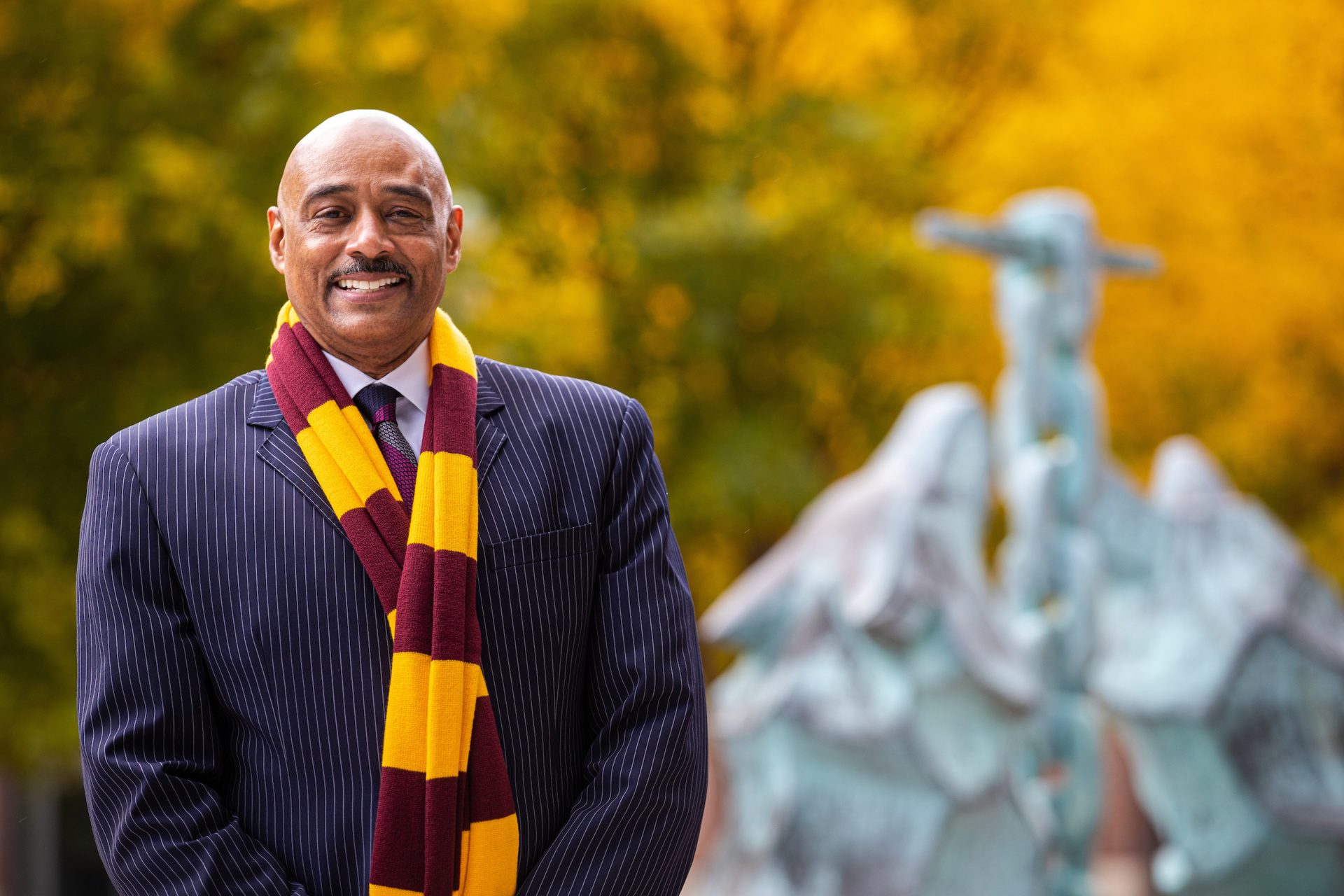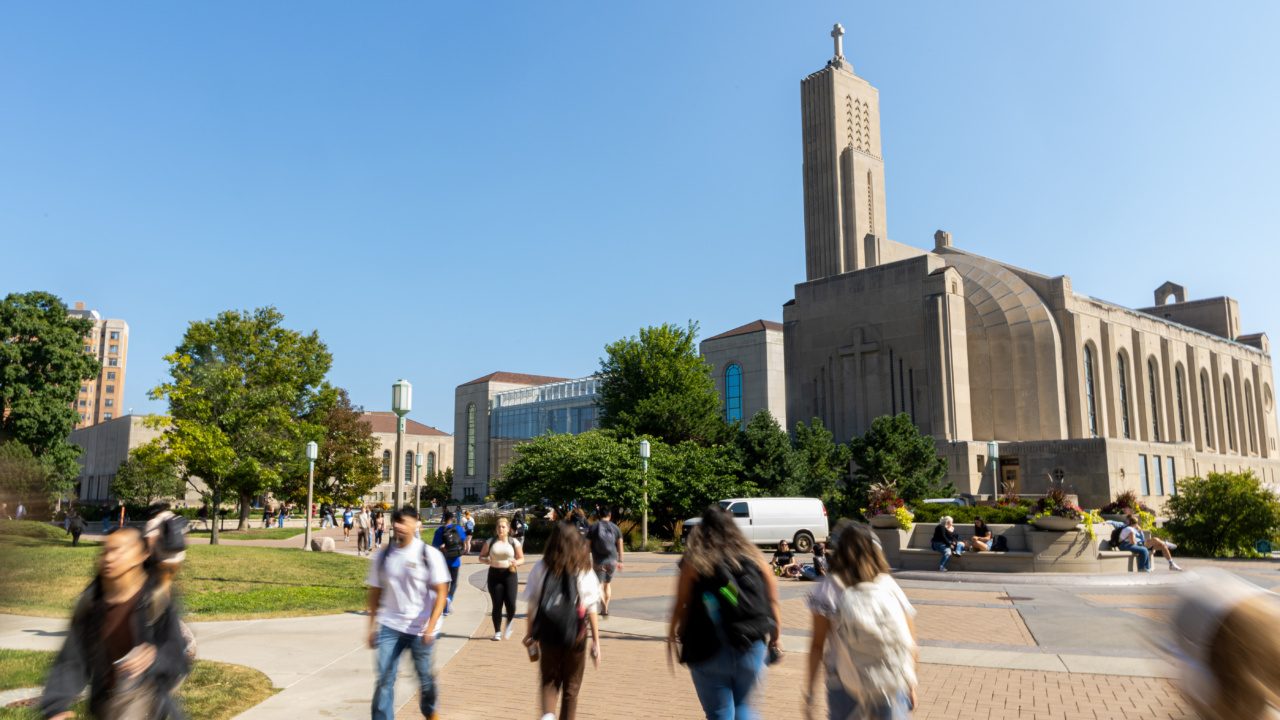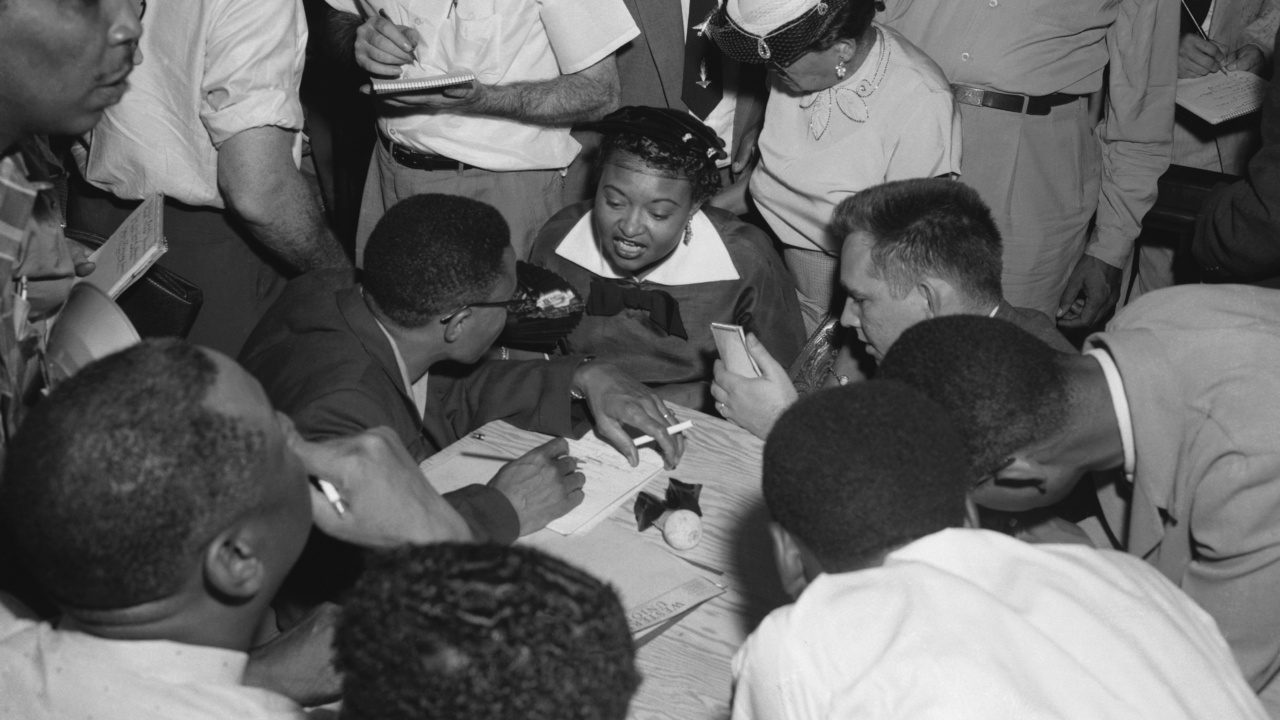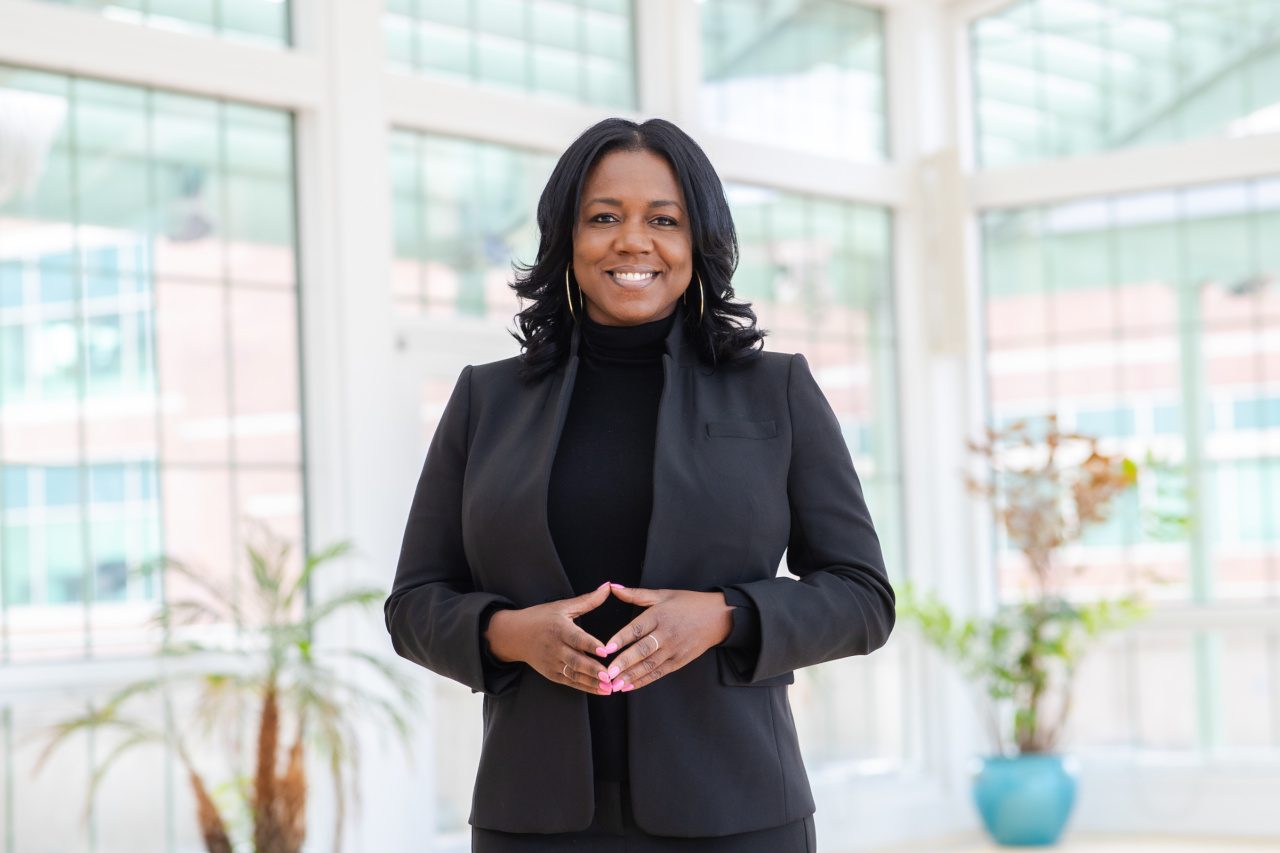
Student advocate
Jesuit-educated Keith Champagne is ready to empower young people as Loyola's new vice president for student development
Keith M. Champagne—Catholic raised and Jesuit educated—feels “a special calling” to be serving as Loyola University Chicago’s new vice president for student development. For more than 30 years, he’s pushed young people to be men and women for others in a rapidly changing world. The opportunity to do so in Chicago, ingratiating himself with Loyola’s diverse student body, is one the veteran collegiate administrator couldn’t pass up. We caught up with Champagne in early December, during his first week on the job.
Where’s home for you originally?
Home for me is New Orleans. I come from a large Catholic family of 14 children and was raised by a single mother in public housing, or the projects as people like to say. I often talk to young people about the journey I’ve traveled from the projects to the PhD, and how I’ve been able to get where I’ve gotten because of wonderful people along the way. We like to think we have resilience, we have drive. But it’s the people who’ve taken an interest in us—who mentor us, who shepherd us, who steward us—that help us fulfill our goals and dreams.
What was your college experience like personally?
I went to undergrad at Loyola University in New Orleans. So my journey has now taken me from Loyola to Loyola. And I feel blessed and honored to be back in this Jesuit space. The work I’ve done in higher education has always been undergirded by Ignatian values and Jesuit ideals. It’s shaped me as an individual and as a professional. It has been the framework and the compass for my work.
My mother was so proud when I was going off to Loyola; she was a devout Catholic woman. When I was leaving, she was kind of teary-eyed. And then she pulled me over and said, “Look, don’t you [mess] this up! This is not about you, it is about your brothers and sisters, nieces and nephews who will come behind you.”
When I first went to college, nobody was researching what it means to be a first-generation college student. But it meant a lot to my mother. And it helped set the tone for brothers and sisters and subsequent generations who now see college not as a choice but as an expectation. And when I graduated from Loyola, they gave me the diploma case. I gave it to my mother because we were having a celebration party, and I didn’t see it again until six months after my mother passed away. My sister was cleaning out her things—in her drawer next to her Bible was the Loyola diploma. She had it wrapped in aluminum foil and then inside a plastic bag, all sealed up.
We have to prepare students to be able to think critically, to look at the facts, and to think for themselves.
— Keith M. Champagne, vice president for student development
How did you end up working in higher education?
It was almost by accident. Initially, I wanted to do naval or aviation intelligence. In the 1980s, Top Gun was out, you had An Officer and a Gentleman. I had a brother and a cousin who were joining the Navy at the same time, one as an enlisted person and the other as an officer. I was all ready to go to Pensacola, Florida for officers’ candidate school. I remember meeting with the recruiter and doing all the testing. And though I had asthma as a child, I hadn’t had any asthma flare ups or anything. And what do you know, as soon as I get ready to get sworn in to complete the paperwork, I have an asthma attack! And they told me they couldn’t take me.
When I didn’t do that, the woman who was in charge of admissions at Loyola New Orleans asked me to come work for her, helping her with admissions and with minority student recruitment. That was my entry.
For folks who don’t know what student development is, how do you describe it?
We are giving young people the tools, the resources, and the strategies to go out and make a difference in a world that’s changing, a world that’s ambiguous, a world that’s disruptive, and a world that’s volatile. We have to prepare students to be able to think critically, to look at the facts, and to think for themselves.
Something else I’ve always believed: students come to us right out of high school, and I don’t think they should leave four or five years later the way they came through those doors. One time I heard Cornel West say that many students run through the university. Instead, we should let the university run through them.
You spent many years working at Central Washington University but then also spent time as vice chancellor for student affairs and athletics at the University of Alaska Fairbanks. What is Alaska like?
Alaska is the most beautiful, the most interesting, and the most dangerous place I’ve ever been. And I say that because you’re dealing with an Arctic climate; that necessitates that you prepare yourself a certain way. You have to plug in your car, you have to learn how to dress. In the winter, you get maybe two-and-a-half-hours of daylight and the temperature swings from -25 to -55 degrees Fahrenheit. And Alaska is the last frontier, so there’s a lot of wildlife. At the university, we had these signs: beware of moose. I would ask people,“What is it about a moose?” I learned that a moose is the only four-legged animal that could kick in all directions to protect itself and its calves!
But people in Alaska were free spirits; they were patriotic, and they were committed to diversity. Alaska is the homeland of Alaska Native people, who have been there 10,000 years. Fairbanks is also a hockey community. I had worked in athletic departments where football was the big sport. For two years in Alaska, I was the athletic director, and I fell in love with hockey. I love the speed and the skill-sets required on the ice.
Were you always a sports fan?
Yeah, always a sports fan. I played sports in high school and had a lot of cousins and younger brothers who played in college. One of the things I liked about sports—it’s a great equalizer. You’re judged by your actions, your performance, and your success. It was also a way to bridge the gap between men and women from diverse backgrounds. It allows young people to live embedded and immersed with one another, day-in and day-out.
In student development, if we’re providing students with a transformative life experience, we have to ensure they get to know other human beings. That means developing appreciation, the value of understanding, and some competencies to work with people who are different from yourself.



